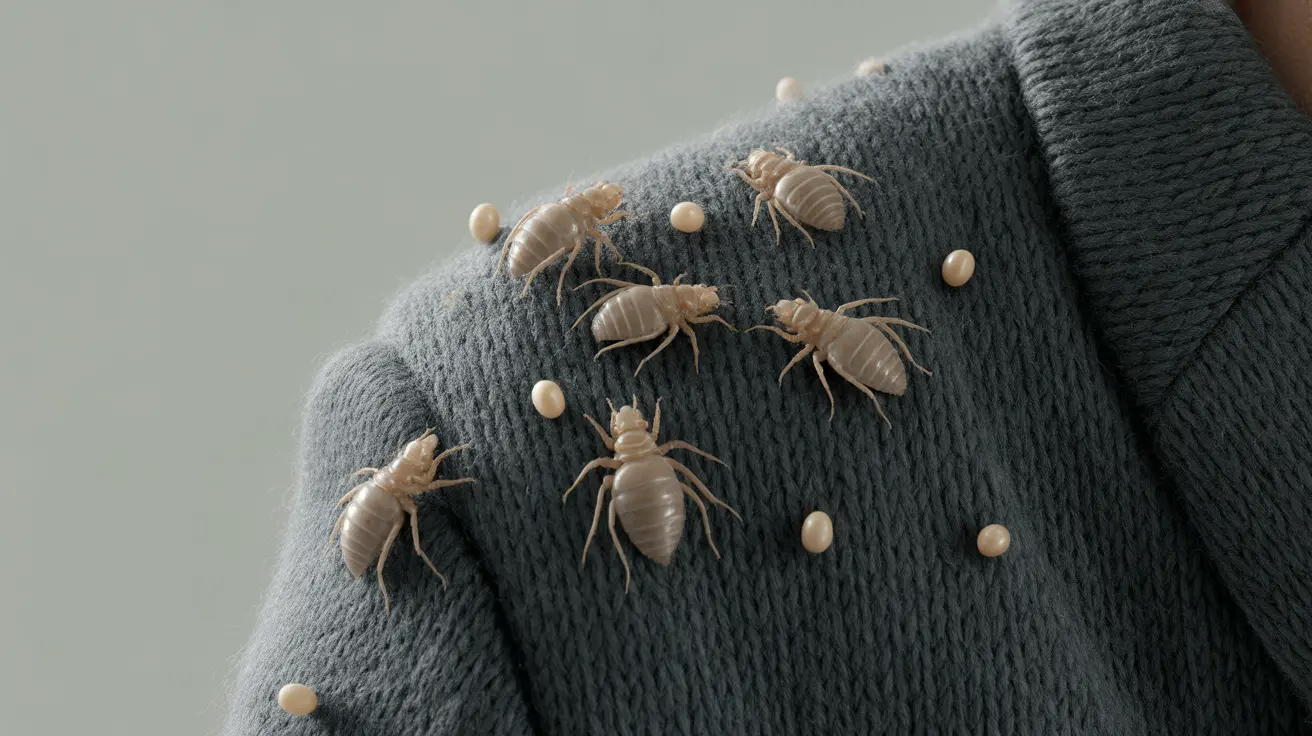Body lice infestations can be distressing and uncomfortable, but with proper treatment and preventive measures, they can be effectively eliminated. These parasitic insects feed on human blood and primarily live in clothing and bedding, making their way to the skin to feed. Understanding how to identify and treat body lice is crucial for quick recovery and preventing their spread to others.
This comprehensive guide will walk you through proven methods to eliminate body lice, including proper hygiene practices, clothing care, and medical treatments when necessary. We'll also cover prevention strategies and help you recognize when to seek professional medical attention.
Understanding Body Lice Infestation
Body lice are tiny parasites that typically measure 2-3 millimeters in length. Unlike head lice, they primarily live in the seams of clothing and bedding, only moving to the skin to feed. They're most commonly found in areas where clothing fits snugly against the body, such as the waist, groin, and armpits.
Identifying Body Lice Symptoms
Before beginning treatment, it's important to confirm that you're dealing with body lice. Common signs include:
- Intense itching in affected areas
- Small red spots or bumps on the skin
- Dark spots on clothing (lice droppings)
- Visible lice or eggs in clothing seams
- Scratch marks or small wounds from itching
Personal Hygiene and Immediate Actions
The first step in treating body lice involves thorough personal hygiene measures:
- Take a hot shower or bath immediately
- Use soap and warm water to clean affected areas thoroughly
- Change into clean clothes after bathing
- Wash hands frequently throughout the treatment process
Proper Clothing and Bedding Treatment
Effective elimination of body lice requires proper treatment of all potentially infested items:
Washing Instructions
- Wash all clothing and bedding in hot water (at least 130°F/54°C)
- Use high heat in the dryer for at least 30 minutes
- Seal non-washable items in plastic bags for 2 weeks
- Iron seams of clothing on high heat when possible
Additional Cleaning Methods
- Vacuum furniture and carpets thoroughly
- Clean storage areas where clothing is kept
- Dispose of any items that cannot be effectively cleaned
Medical Treatments
In some cases, over-the-counter or prescription medications may be necessary:
Over-the-Counter Options
- Permethrin-based treatments
- Pyrethrin-based products
- Topical anti-itch creams for symptom relief
Prescription Medications
- Prescription-strength permethrin
- Oral medications for severe cases
- Alternative treatments for resistant cases
Prevention Strategies
To prevent reinfestation or initial infection:
- Maintain regular personal hygiene
- Avoid sharing clothing or bedding
- Regular washing of clothes and bedding
- Immediate treatment if exposure is suspected
- Regular inspection of clothing seams
Frequently Asked Questions
How do you effectively get rid of body lice through personal hygiene and clothing care?
Body lice can be effectively eliminated through a combination of thorough personal hygiene and proper clothing care. Take hot showers, change into clean clothes immediately after bathing, and wash all potentially infested items in hot water (130°F/54°C) followed by high-heat drying.
What are the best washing and drying methods to kill body lice and their eggs?
The most effective method is washing clothes and bedding in hot water (at least 130°F/54°C) and drying on high heat for a minimum of 30 minutes. Items that can't be washed should be sealed in plastic bags for two weeks or dry cleaned.
When should medication be used to treat body lice, and what types are available?
Medication should be used when regular hygiene measures aren't sufficient or in cases of severe infestation. Available options include over-the-counter permethrin or pyrethrin-based products, and prescription medications for resistant cases.
How can body lice be prevented from spreading between people and through clothing?
Prevent spread by avoiding sharing personal items, maintaining good hygiene, regularly washing clothing and bedding in hot water, and immediately treating any suspected cases. Isolate affected items and clean living spaces thoroughly.
What symptoms indicate a body lice infestation and when should I see a doctor?
Key symptoms include intense itching, red bumps on the skin, visible lice or eggs in clothing seams, and dark spots on clothing. See a doctor if self-treatment measures aren't effective after two weeks, if you develop an infection from scratching, or if you have severe allergic reactions.




